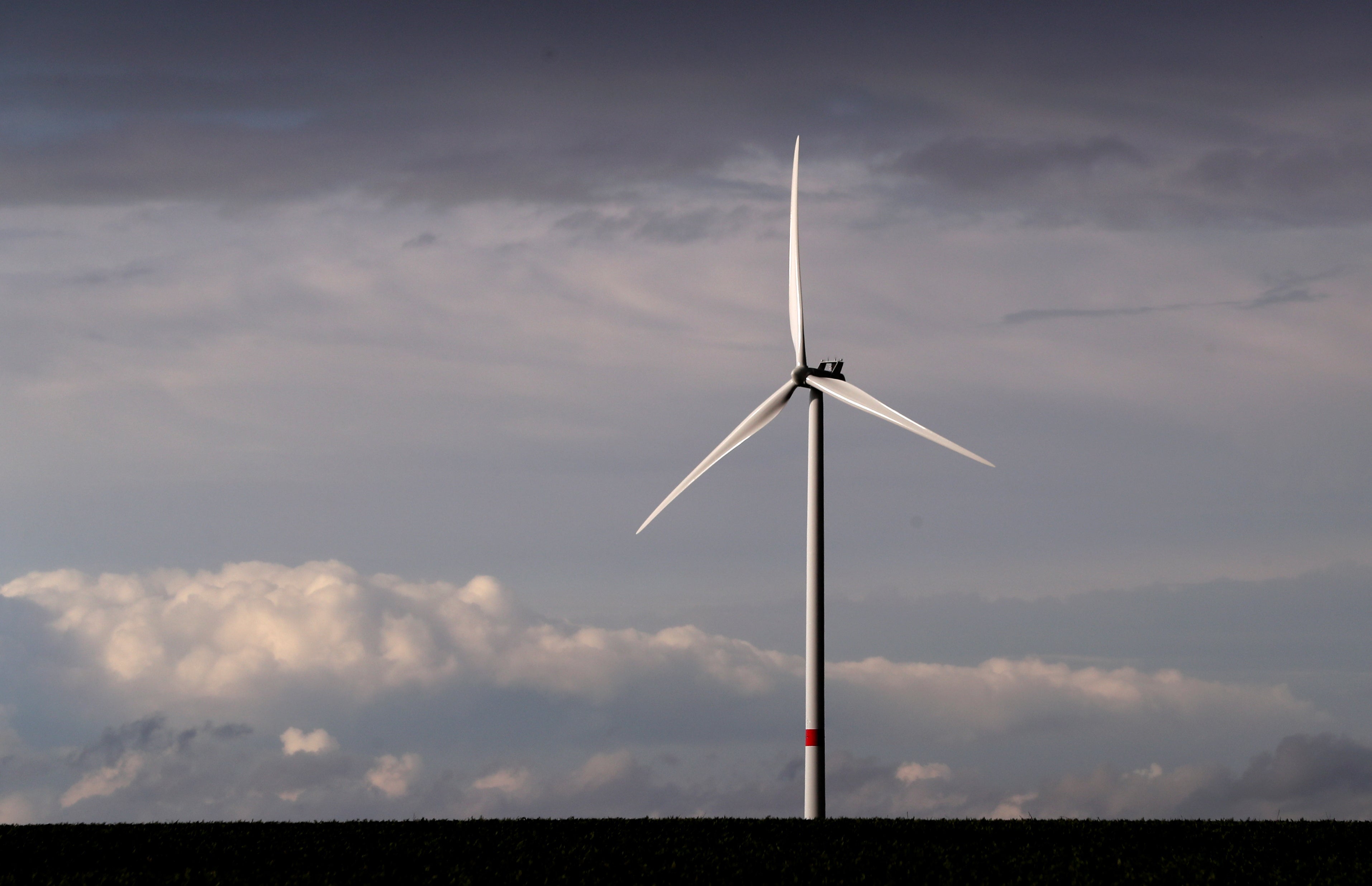Is Boris Johnson really planning to increase state investment spending – or is it just spin?
Do ministers think all their ambitious infrastructure goals can be achieved through private spending and rhetorical ‘boosterism’ from the prime minister? Or are the real government investment spending commitments still to come? Ben Chu investigates


In his speech at the Conservative Party conference on Tuesday, Boris Johnson made the eye-catching claim that wind turbines will provide all the electricity used by UK households within a decade.
“Wind farms to power every home,” was the Daily Mail’s headline, based on an overnight pre-briefing on the contents of the prime minister’s speech.
Yet the only financial commitment actually in the speech with respect to achieving this green energy revolution by 2030 was £160m of government investment for port infrastructure to help manufacture and install wind turbines.
Analysts believe the goal of 100 per cent domestic wind-powered electricity is realistic but estimate that £50bn of capital investment will be required to achieve it, which puts that £160m in context.
Similarly, last month the prime minister announced £3.7bn of state investment to build 40 new hospitals across England by 2030.
But NHS Providers, which represents hospital trusts, said the actual cost of building 40 new hospitals would be more like £20bn.
In June the prime minister announced £5.5bn of new capital investment projects as part of what he described as a Franklin Roosevelt-style “New Deal” for the UK economy.
Yet it turned out that none of this at all was new money, but was rather all re-allocations from departmental underspends elsewhere.
This pattern of behaviour raises the question of whether – underneath the rhetoric about infrastructure revolutions, levelling up and green energy transformations – the government is actually intending to spend any new money at all?
Do ministers think all their ambitious infrastructure goals can be achieved through private spending and rhetorical “boosterism” from the prime minister? Or are the real investment spending commitments still to come?
The big picture is that the government is nominally committed to a considerable increase in investment spending.
Public sector net investment is pencilled in to rise from £42bn in 2019 to £70bn in 2022.
As a share of GDP this represents a rise from around 2 per cent to 3 per cent of GDP – a level it will, apparently, sustain until the middle of the decade.
This would be the highest sustained level of public investment as a share of the economy since the 1970s.
In their manifesto, the Conservatives put figures on additional planned funding for a host of capital spending schemes, ranging from building infrastructure for electric vehicles, to new flood defences, to domestic insulation projects. Yet these costings only accounted for around a quarter of the additional spending their new capital spending overall envelope made available.
In March, the Budget document stated that the next Comprehensive Spending Review “will allocate capital funding for projects across the UK to drive growth, level up economic opportunity, decarbonise the economy, and maintain and build high-quality public infrastructure, including schools and hospitals”.
So, in theory, that should be a moment where we get a welter of information and detail from the government about where all that capital spending firepower will actually be deployed in the coming years – which train lines will be built, which colleges and hospitals will be constructed, which roads will be widened, which clean energy projects will be funded etc.
But will it happen?
The next Spending Review, covering departments’ spending plans for the three or four years from 2021-22, was expected to be held in November.
But the pandemic has thrown things into some doubt. The Autumn Budget has already been pushed back to next year.
And there is some suggestion that, given the gaping uncertainty about the state of the economy and the public finances over the next few years, the Spending Review will now only cover one year (2021-22) of so-called “resource” spending (things like civil servants’ pay and the administration budget) rather than the usual three.
It’s possible that the government will only lay out detailed capital investment spending for a single year – 2021-22 – as well, though Ben Zaranko of the Institute for Fiscal Studies thinks it’s more likely that these plans will still cover four years as originally planned. But we will have to wait and see.
There’s an irony about the current situation, where the rhetoric from the prime minister does not match the fiscal reality of his announcements.
Inflated claims and double counting is usually a practice of governments which have no money to spend – either because of their own rules or economic circumstances. Gordon Brown was frequently guilty of the practice at the Treasury and it was also increasingly a feature under George Osborne’s chancellorship too.
Yet this administration has considerable firepower for investment under its own rules and market interest rates are extremely low, meaning the government has no problem borrowing, despite big increases in the public debt. Plus there is a consensus that higher investment spending will be vital for driving the economic recovery in the wake of the pandemic, with the International Monetary Fund making this case loudly this week.
So why, given all that, are ministers double counting rather than simply announcing more real spending?
Mr Zaranko suspects the government wants to maximise the good publicity from its new commitments by announcing, first, the headline capital spending envelope, then, second, the various areas for new spending, and then, finally, the specific projects.
“By announcing the same thing multiple times you try to get multiple headlines,” he says.
“It is in each case ‘new’ news – you are announcing something new - but what you could do is announce it all in one go at the Spending Review. But that’s not smart politics I guess.”
If this take is right the government is trying to garner favourable headlines. But, at least on current plans, the money to back them up should eventually arrive too.


Join our commenting forum
Join thought-provoking conversations, follow other Independent readers and see their replies
Comments